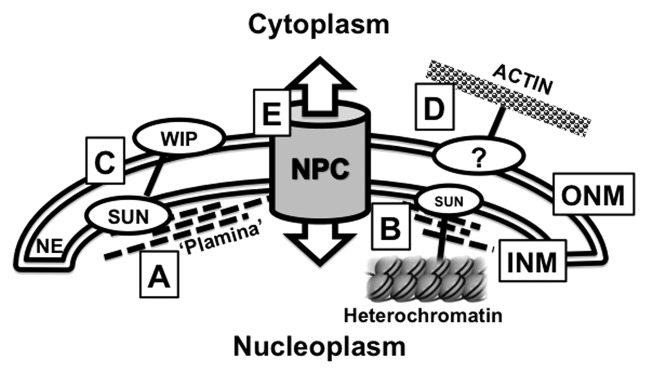
Figure 1. Functional components of the Plant Nuclear Envelope. This meeting highlighted research that focused on the interactions that occur at the plant nuclear envelope (NE). The NE forms a double membrane separating the nucleoplasm and cytoplasm consisting of the Inner Nuclear Membrane (INM) and the Outer Nuclear Membrane (ONM). (A) The NMCP/CRWN proteins are thought to form a proteinaceous “matrix” that controls the shape of the nucleus and is defined in this review as the “Plant Lamina” or “Plamina.” (B) The plamina is hypothesized to associate with SUN proteins that sit within the INM. These SUN proteins also anchor heterochromatic structures such as telomeres and chromocenters to the nuclear periphery. (C) SUN proteins interact with WIPs to form nucleo-cytoplasmic bridges that cross the NE, where the WIP proteins are functional plant KASH proteins. (D) In non-plant systems, nucleus positioning is determined by interactions with the cytoplasmic actin network. However the specific nature of these actin-interacting proteins are currently unknown in plants. (E) The Nuclear Pore Complex (NPC) is an essential conduit for nucleo-cytoplasmic transport. The composition of the plant NPC is similar to equivalent structures in metazoans and yeast yet evidence is emerging for plant specific nucleoporins, such as NUP136. Appropriate references can be found within the main text.
